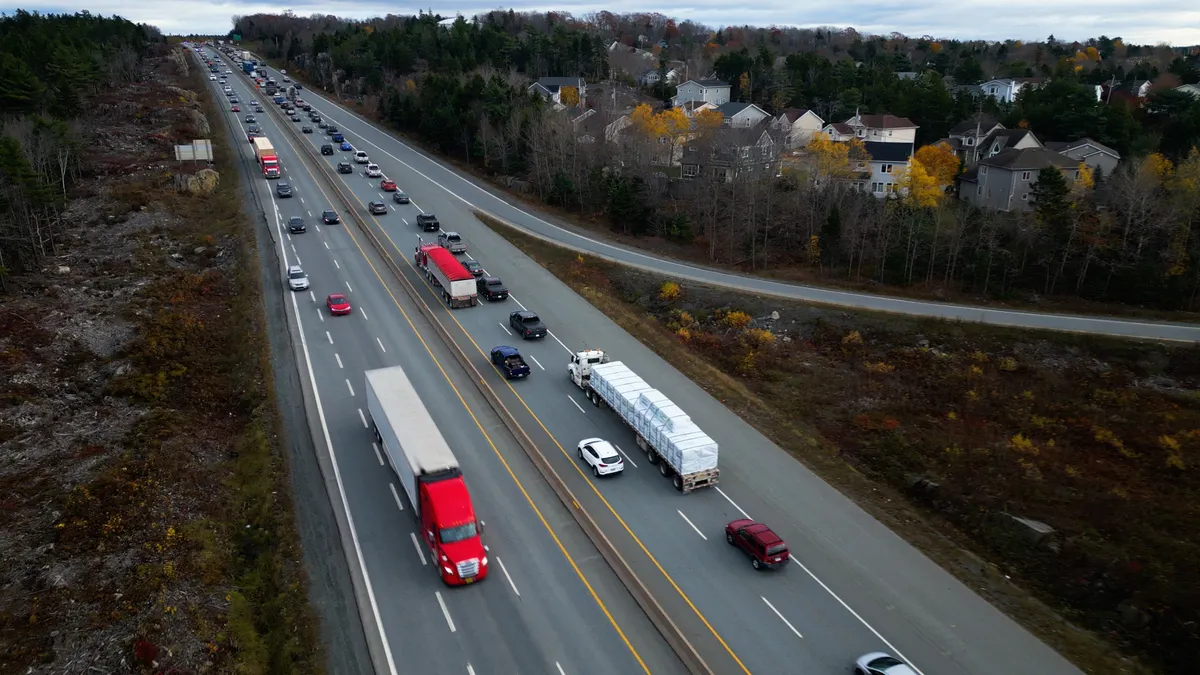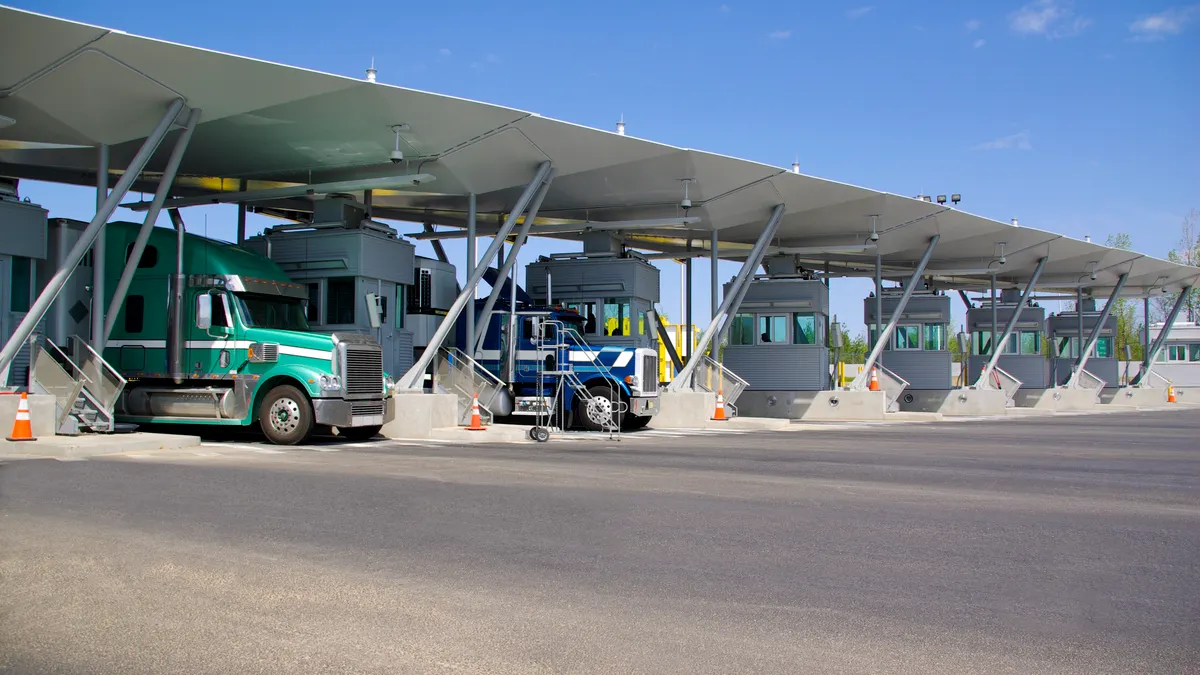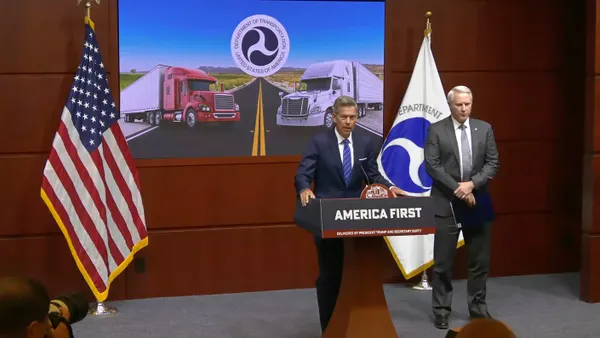Dive Brief:
- The American Trucking Associations and Road Safe America sent DOT Secretary Pete Buttigieg a letter to express support for a 2019 bill on speed-limiting devices.
- ATA's letter, sent March 3, drew a response from the Owner-Operator Independent Drivers Association, which sent its own letter to Buttigieg the next day. "Any efforts to mandate speed limiters will take more control of the truck out of the driver’s hands and unnecessarily constrain small businesses," OOIDA wrote.
- "ATA policy reflects innovation and the growing number of technological solutions our industry is rapidly adopting. We’ve thankfully evolved from a 1970’s mindset," Bill Sullivan, ATA executive vice president for advocacy, said in an emailed statement.
Dive Insight:
One of the most divisive aspects of mandated speed limiters is who, and how, they would help. Those in favor of regulation stress safety, while those against believe a mandate would give large carriers a competitive advantage without yielding significant safety benefits.
"Mega carriers’ use of speed limiters is primarily for fleet management purposes – a tool single truck operators and small fleets don’t require," OOIDA said in a press release about the letter. "OOIDA sees [ATA's] effort to speed limit independent truckers as nothing more than an attempt to eliminate one of the few economic advantages small-business truckers currently enjoy."
OOIDA's stance is that enforcing existing limits is the best way to promote safety as it relates to speed.
ATA's letter said the basis for the outreach was the DOT's Significant Rulemaking Report from February 2020, which is a list of the agency's pending legislation. On that list was the rule on speed limiters from the National Highway Traffic Safety Administration and FMCSA, which was published as a notice of proposed rulemaking in September 2016.
"Much has changed since 2016," ATA wrote in its letter this month. Widespread adoption of automated emergency braking and adaptive cruise control has allowed for more speed governance, ATA said. So, ATA has adjusted its stance. Instead of pushing for the 2016 NPRM, the group supports the Cullum Owings Large Truck Safe Operating Speed Act of 2019.
The bill would require all new commercial motor vehicles to have speed limiters, require trucks built after 1992 that have speed limiters to use them, and require that the maximum speed be 65 mph, or 70 mph when the driver is using adaptive cruise control or AEB.
Buttigieg has voiced support for incentivizing safe driving practices, signaling his DOT may be open to exploring the topic once again. He campaigned for president on an infrastructure plan that included an $1 billion increase in federal funding for NHTSA and the Federal Highway Administration "to address unsafe driving behavior, research solutions for distracted driving, and strengthen enforcement."
OOIDA argued in its letter that large fleets are better positioned to pay for the costs associated with those two technologies "Even worse, our members’ experience with AEB has shown that it doesn’t improve safety, but creates new challenges and dangers, such as false or unexpected system activation," the group said.
The 2019 bill cites multiple studies that showed speed likely contributed to severity in truck crashes, that most drivers are in favor of speed limiters and that trucks not using speed limiters had a higher crash rate than those that did use them. Those studies were conducted in or before 2012.
"I have trouble seeing how a speed limiter makes an experienced, safe driver who has years on the road a safer driver," Alex Scott, assistant professor of supply chain management at Michigan State University who has conducted studies on truck safety, said via email. A speed limiter could improve the safety of an irresponsible driver, he said. "But those drivers can still speed in non-highway situations, which are generally more dangerous."
Scott said he was dubious on whether a mandate on speed limiters would increase safety. And he noted such a regulation would increase frustration for passenger vehicles caught behind one speed-limited truck trying to pass another, and it could put time pressure on drivers who are used to moving faster. It could also increase speeding on non-highways.








